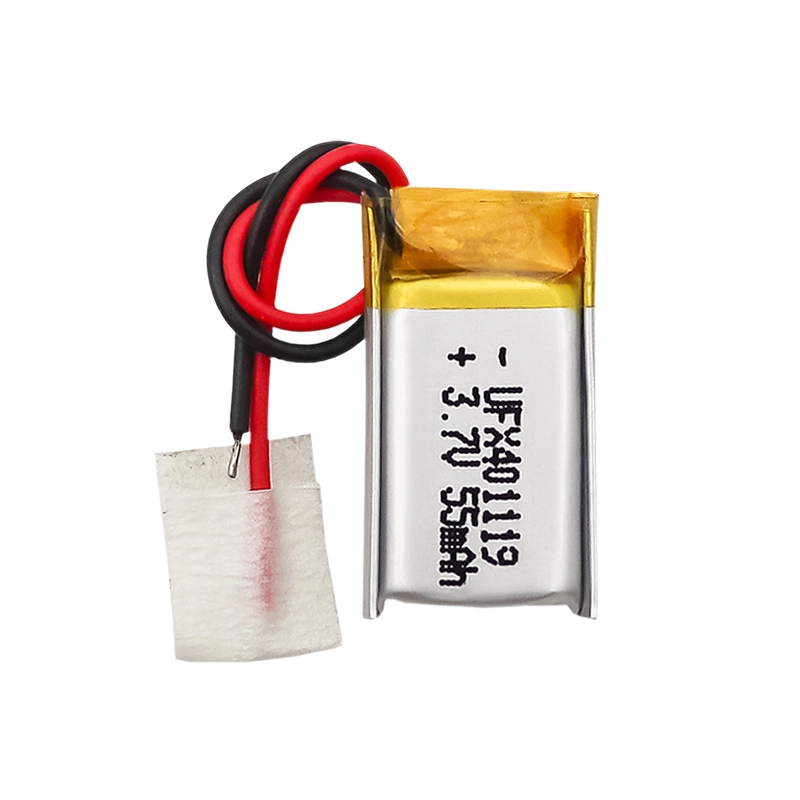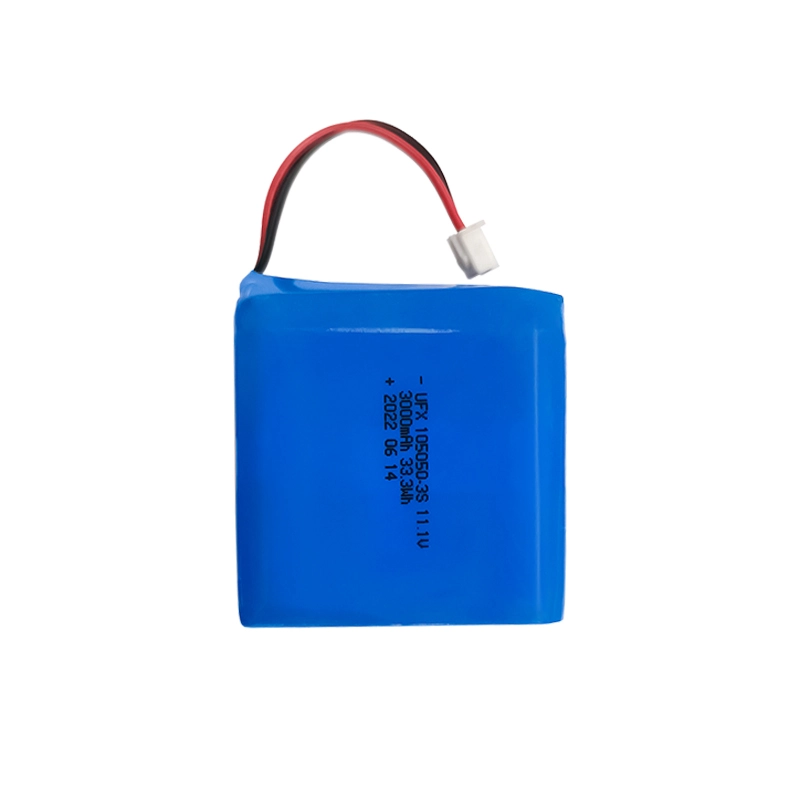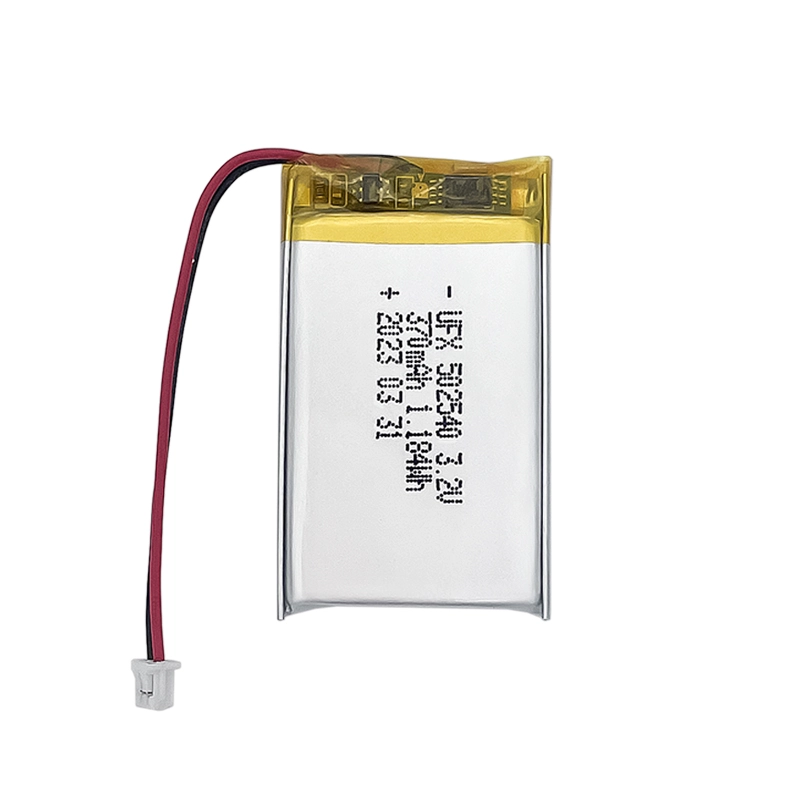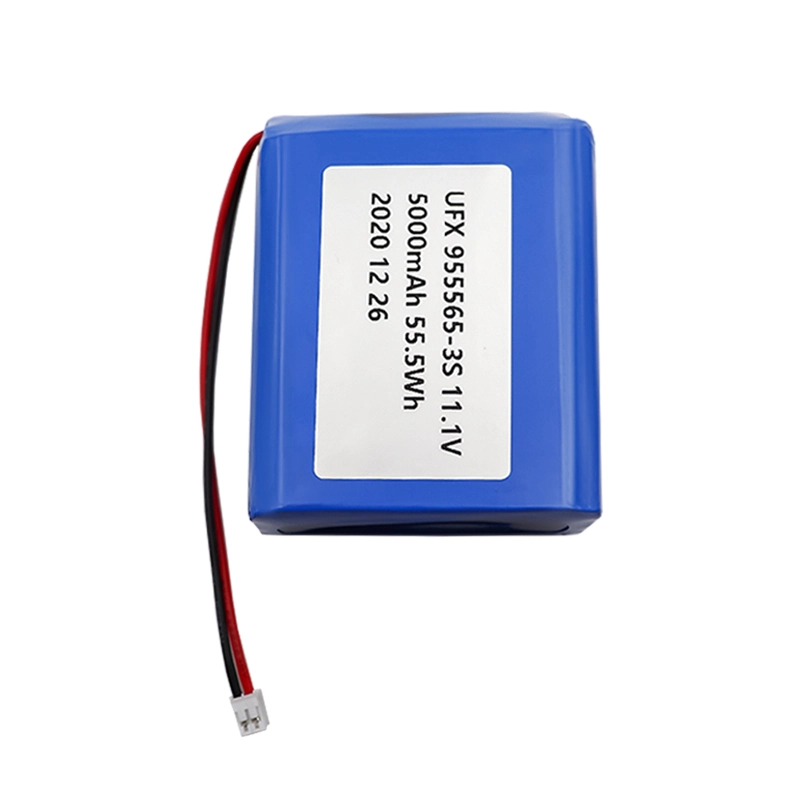
Forehead Thermometer Battery Solutions
Components of a forehead thermometer
The forehead thermometer is mainly designed to measure the human body’s forehead temperature reference, and it is also very simple and convenient to use. The temperature can be measured accurately within one second. And there is no need to come into contact with the human body, and the temperature can be measured with one click through the air.
A complete forehead thermometer product is composed of three parts: the outer shell, the internal circuit board and the battery (system power supply). To break it down a little further, the forehead thermometer consists of a PCBA, display screen, casing, battery, etc.
Infrared temperature sensor: used to collect the temperature of the human body/object. The infrared forehead thermometer is generally measured at a distance of 1~3cm from the forehead. The collected data is amplified by a signal amplification circuit. The signal amplification circuit is optional.
MCU microprocessor: accepts the data from the infrared temperature sensor for processing. For analog sensors, an A/D conversion circuit needs to be added to convert the analog signal into a digital signal, and then processed by the MCU. For digital temperature sensors, it can be directly to the MCU for processing.
Button module: used for mode switching, measuring objects, measuring forehead, measuring neck, etc. The buttons can be customized and can be used as power button, system reset button, etc.
LCD display: MCU controlled, used to display temperature data.
Buzzer: alarm module, the MCU sets the normal temperature range, such as 35~37.3℃, if it exceeds the upper limit or is lower than the lower limit, a buzzer alarm will occur. If the temperature is too low or too high, it is abnormal.
Crystal oscillator circuit: used as a clock for MCU microprocessing to provide an oscillation source.
Forehead thermometer battery: The battery is the main power source of the entire system. Because of the portability of the forehead thermometer, it must be battery-powered. The most important thing for battery-powered products is low power consumption. When not working, the system needs to enter sleep mode to achieve lower power consumption and extend battery life.
Power management: The power supply voltages of infrared temperature sensors, display screens, buzzers and other modules are not necessarily the same. The battery needs to be converted into a suitable voltage value to power each module. Of course, you can also use rechargeable batteries and add a charging circuit.
Infrared temperature sensor
Here we can talk about the infrared temperature sensor in detail. This kind of thermopile sensor is a must-have equipment for making forehead thermometers and ear thermometers. Without it, you cannot get a complete product. Let’s take a look at the infrared temperature sensor;
In an infrared thermometer, the core component is called the “infrared temperature sensor”. Currently, infrared temperature sensors can be divided into the following five types according to the conversion technology they use after receiving infrared energy:
1) Pyroelectric type: triglyceride sulfate, lithium tantalate, etc.
2) Thermopile type: N-type and P-type polysilicon
3) Diode type: single crystal or polycrystalline PN junction
4) Thermocapacitor type: dual-material film
5) Thermistor type: vanadium oxide, amorphous silicon, etc.
Most of the sensors used in our common forehead thermometers and ear thermometers are of the thermopile type.
The temperature measurement process is that after the infrared thermopile temperature sensor receives the infrared energy emitted from the human body surface, it converts the infrared energy into an electrical signal. The high-precision amplifier then amplifies the electrical signal. Through analog-to-digital conversion, it is converted into a digital signal, and then a higher-precision temperature value can be output by using a single-chip microcomputer through algorithm program compensation correction, parameter calibration, etc. Finally, the shell display and other controls are added together to form a complete temperature-measuring gun.
Forehead thermometer battery types
Button Cell Batteries: Many forehead thermometers use small, round-button cell batteries, such as CR2032 or CR2025. These batteries are compact and provide sufficient power to operate the thermometer. They are commonly found in various electronic devices and are easy to replace.
AAA Batteries: Some forehead thermometers use AAA batteries, which are larger cylindrical batteries. AAA batteries offer higher capacity and longer runtime compared to button cell batteries. They are readily available and can be easily replaced when needed.
Rechargeable Batteries: Certain forehead thermometers are designed to be more environmentally friendly and cost-effective by using rechargeable batteries. These may include rechargeable AAA or custom battery packs that can be charged using a charging dock or a USB cable. Rechargeable batteries eliminate the need for frequent replacements and can be a convenient option for long-term use.
Ufine forehead thermometer battery
As a rechargeable lithium battery manufacturer, Ufine has successfully developed and produced thousands of conventional batteries, lithium iron phosphate batteries, ultra-thin special-shaped batteries, low-temperature batteries and 18650 batteries. Ufine’s monthly production capacity reaches 4 million units. Ufine’s lithium battery products sell well all over the world and are widely used in mobile phones, mobile digital products, laptops, energy storage, power tools, transportation, medical, aerospace and other fields.
High Energy Density
It stores large amounts of energy in a smaller and lighter package
Longer Cycle Life
Withstands extensive charge and discharge cycles
Low Self-Discharge
Maintains power longer when not in use
Safety
Minimizes the risk of accidents and ensures safe operation
More Information About Forehead Thermometer Battery
-
Can lithium batteries be customized for specific applications?
-
What is the minimum order quantity (MOQ) for lithium batteries?
-
What is the lead time for lithium battery production and delivery?
-
Can I get samples of lithium batteries before placing a bulk order?
Latest Blogs
About Lithium Battery Industry News

Overview of Deep Cycle Lithium Battery
In this article, we explore the life, voltage, capacity, and charging considerations of deep cycle lithium batteries.
2024/04/30 Gerald

How Long do Lithium Batteries Last?
How long do lithium batteries last? we will explore the factors that influence the lifespan of lithium batteries and provide insights into their longevity.
2024/04/30 John

How to Choose the Best LiFePO4 Battery?
Choose LiFePO4 batteries for superior performance, safety, and versatility in EVs, UPS, and backup power. This guide helps you make informed decisions.
2024/04/30 Henry

Get 12v Lithium Car Battery As a Power Source for the Ride
Make the right choice for your vehicle's battery needs by installing a 12 volt lithium car battery. You will enjoy maintenance-free longevity with this change.
2024/04/30 Gerald
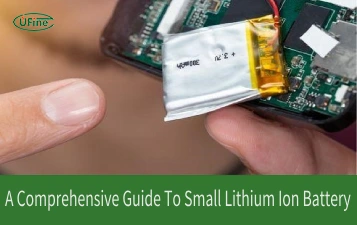
Everything About A Small Lithium Ion Battery
Discover the features, uses & future potential of a small lithium ion battery. A compact and tiny powerhouse ideal for smartphones, wearables, drones & more.
2024/04/30 Gerald

Why Should You Choose Lithium Ion Marine Battery?
Upgrade your boat's power with a Lithium ion marine battery, featuring lighter, longer life, faster-charging abilities. Let's choose the best marine battery.
2024/04/30 Gerald

